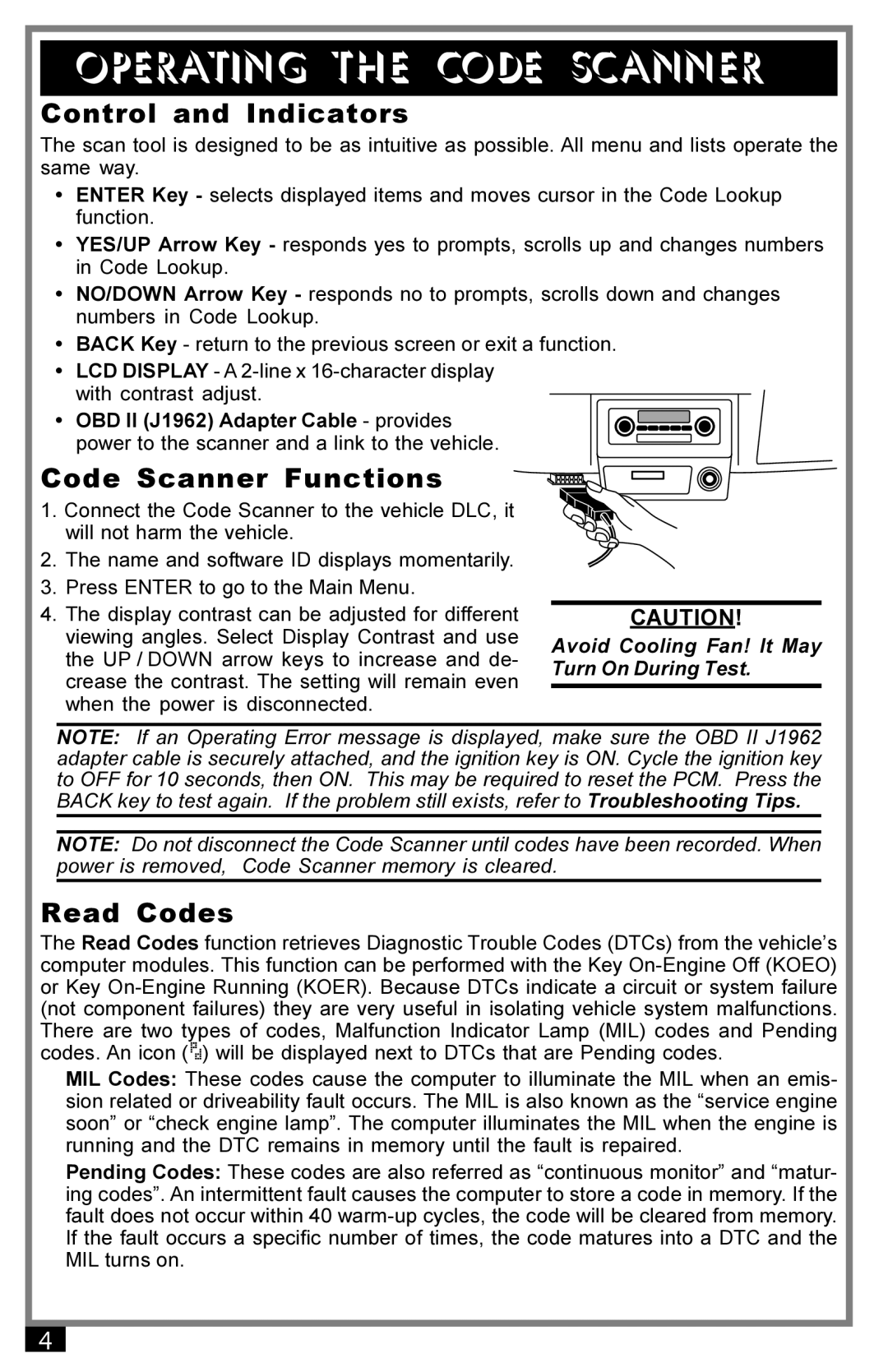9040 specifications
The Actron 9040 is a highly regarded automotive diagnostic tool designed to provide users with an efficient and reliable means of troubleshooting vehicle problems. Its user-friendly interface makes it suitable for both novice users and experienced technicians, enabling it to effectively cater to a diverse demographic of automobile enthusiasts.One of the main features of the Actron 9040 is its compatibility with a wide range of vehicles. Supporting both OBDI and OBDII protocols, this scanner can work with vehicles from 1996 onward, making it an invaluable tool for diagnosing issues across many makes and models. Its broad compatibility ensures that users can take full advantage of its diagnostic capabilities.
The device boasts a large, easy-to-read LCD screen that displays diagnostic codes and live data in real time. This functionality allows users to visualize how various sensors and systems are performing while the vehicle is in operation. Additionally, the Actron 9040 reads and clears diagnostic trouble codes (DTCs), which can help to quickly identify issues and reset the “Check Engine” light after repairs have been made.
Advanced features of the Actron 9040 include onboard monitoring of various vehicle systems, such as the engine, transmission, and emissions system. This helps users to pinpoint specific problems and assess the overall health of the vehicle. The tool also includes a built-in code library, providing users with detailed definitions of trouble codes, making the troubleshooting process more intuitive.
The Actron 9040 utilizes easy-to-understand menus and prompts, streamlining the diagnostic process. The device is powered through the vehicle's OBDII port, eliminating the need for batteries or external power sources. This design enhances portability and ensures that users can perform diagnostic checks even in remote locations.
In conclusion, the Actron 9040 combines advanced diagnostic technologies with user-friendly features to create an essential tool for anyone involved in vehicle maintenance. Its multi-vehicle compatibility, real-time data monitoring, and in-depth diagnostic capabilities make it an exceptional choice for both DIY enthusiasts and professional mechanics alike. With the growing complexity of automotive systems, tools like the Actron 9040 are crucial for effective vehicle maintenance and repair.

